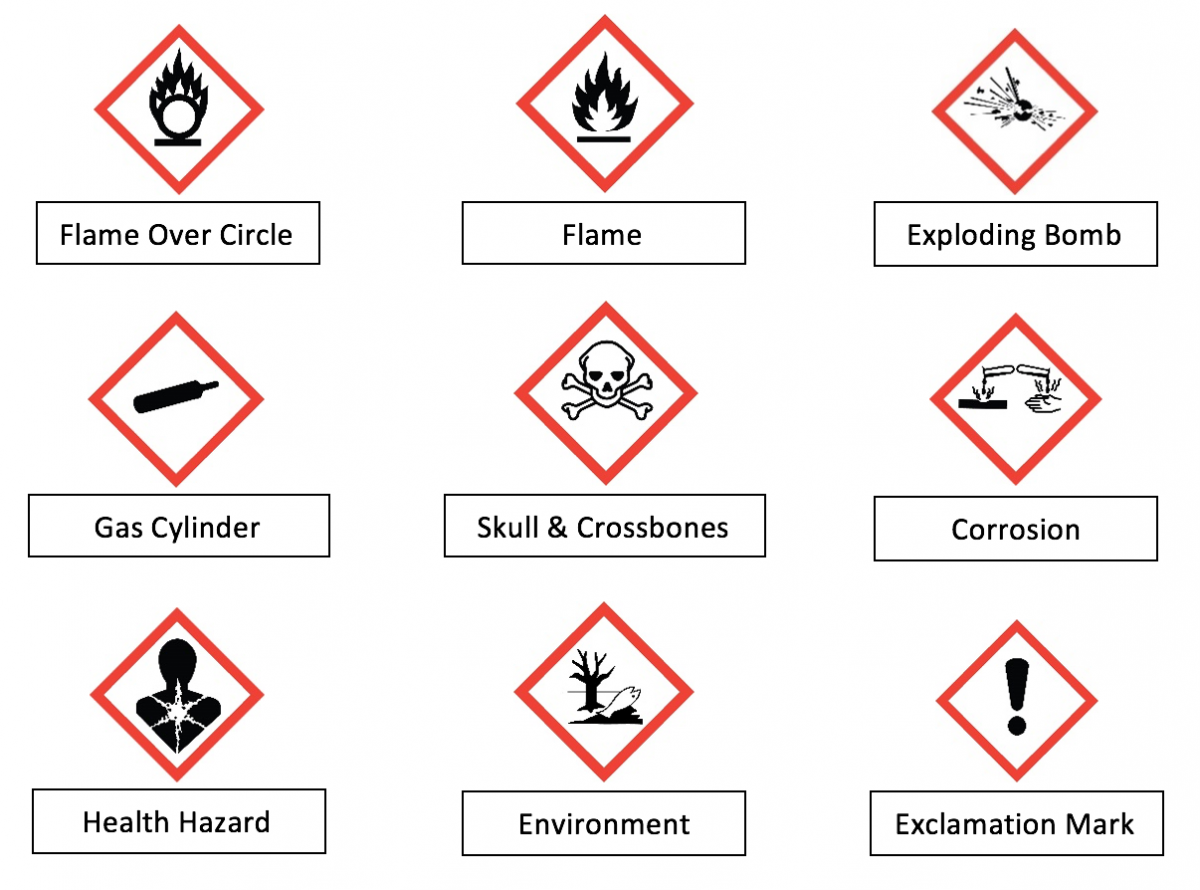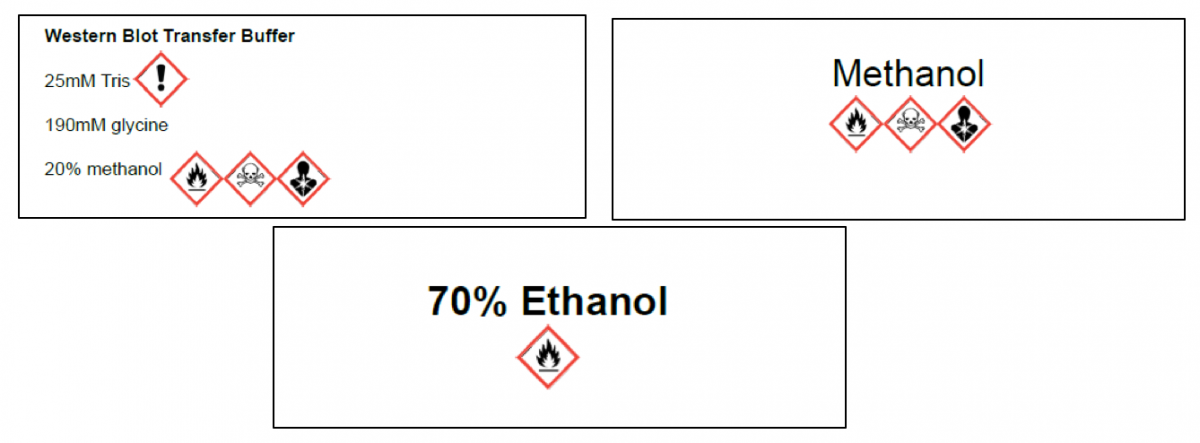What is GHS? GHS is the acronym for Global Harmonization System. The GHS Classification System was adopted by the Occupational Safety and Health Administration (OSHA) to align domestic labeling requirements with Internationally recognized standards. Since Hazard Communication must be comprehensive, the use of GHS symbols extends to chemical labeling, lab door signs, safety data sheets, safety training, and other forms of communication to warn employees of chemical hazards.
Safety Data Sheets (SDS) must be readily available (labs may utilize the EHSO Online SDS Database). Previous newsletter articles have presented the classification of chemical hazards consistent with the Globally Harmonized System of Classification (GHS). These articles can be found at the Emory Research Administration News Blog (https://scholarblogs.emory.edu/ranews/?s=GHS&searchsubmit=Search). Using the GHS hazard symbols in conjunction with signal words, and/or hazard statements, will ensure laboratories convey information about the chemicals in their workplace.
What changes to chemical labeling have occurred since the adoption of GHS? Chemicals are classified based on their potential hazards. It is a requirement that Emory communicates the potential hazards and any necessary means of protection to employees. The communication is specific to hazardous chemicals present in work area and chemicals that present a potential for exposure during normal conditions of use. Since the adoption of GHS, the hazard symbols or pictograms on chemical stock bottles have changed. Chemical manufacturers are required to identify potential hazards using one of the 9 GHS pictograms shown below:

How should chemical containers be labeled in the workplace? Labs must ensure that labels of incoming chemicals (commercial containers) are never removed or defaced. Additionally, when labs transfer chemicals from the original container into a secondary container, the container must be labeled with the chemical name and the associated hazards. All labels must be written in English, clearly legible, and should only be removed or defaced when the container is empty.
What if there is more than one chemical in the container? Mixtures and solutions are generally assumed to carry the hazards of its components. The label should include the name of each chemical in the mixture or the accepted name of the solution. If any component of the mixture is hazardous, then the label must include the individual hazards for each of the components.
How can labs ensure that secondary chemical containers have full chemical name and hazards? One suggestion offered by EHSO is the use of Avery Ultra Duty GHS Chemical Labels for generating OSHA compliant labels. There is an Avery template available online and lab personnel can generate their own labels (print-and-go style with individual GHS pictograms).
Avery UltraDuty GHS Chemical Labels are:
- chemical resistant
- waterproof
- temperature resistant (-20°F to 220°F)
- abrasion resistant
- UV resistant (2 yrs outdoor UV life)
- tear resistant
- Avery GHS printing template is available online: https://app.print.avery.com/dpo8/app/target;ep=USP;name=US_en/design;product=166dc116508704e489facda031746014/ctx;product=166dc116508704e489facda031746014/view?design
Here are some examples of labels that can be generated from the Avery online printing template:

- Multiple sizes are available – one size that would work for most containers:
1” x 2.5” (similar in size to a standard address label)- Avery 60517 – for use with laser printers
- Avery 60527 – for use with pigment inkjet printers
